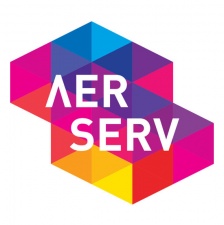Josh Speyer is CEO of US mobile mediation and monetization platform AerServ.
As a game developer, your top priority is creating a user experience that attracts new users and keeps them coming back.
But there must be some kind of revenue model in place, and the majority of developers eschew subscription and download fees in favor of an F2P ad-supported model.
The key is to create an ad experience that does not intrude upon the game experience or annoy the player.
Timing is everything
Think about it this way: you're watching the NBA playoffs Sunday night, and just as Derrick Rose is driving toward the goal, a 60-second ad for Nissan pops onto your screen to interrupt the action.
You yell and throw your remote across the room because the ad popped up at the worst possible time, interrupting what could be the game winning shot.
Alternatively, if the same 60-second spot appeared at halftime instead, you'd be much more willing to watch, especially given the understanding that this commercial is part of the TV consumption experience.
A quick exit
The principle of interruptive vs. integrated advertising applies to all channels, but mobile games are arguably where it is most important, considering that a user can end the game experience with a quick touch of a button if they are not enjoying it any longer.
If you serve interruptive ads that disrupt the user experience, you should expect poor results and an alienated user base.
If you serve interruptive ads that disrupt the user experience, you should expect poor results and an alienated user base.
Intelligently integrated ads, such as pre-roll, rewarded video, or native ads, keep the game experience moving smoothly, keep your user happy and keep the revenue coming in.
Some developers will keep advertising out of their games for the first few sessions or an initial period of time, in an effort not to scare away users or as a way to first pitch the user on in-app purchases.
This approach, however, risks upsetting users who might feel duped by a perceived bait and switch. A user downloads the game, plays for a while and thinks it's ad-free, but after a few days advertisements begin to appear.
A way to avoid this is being up front about the game's revenue model, and what the user can expect to experience.
Good relationships
Ultimately, most users are reasonable people and everyday consumers who know that access to content, online and off, isn't free; we pay for it with the time we spend viewing ads.
If users enjoy a game, most will be happy to support the developer by viewing ads with the understanding that the revenue pays for continued development and improvements to the game.
Sometimes it can be useful to actually communicate that value upfront with a brief, unobtrusive message upon download or on a welcome screen. The little reminder sets expectations, and can diffuse possible annoyances of having to pause gameplay to watch an ad.
Feedback loops
Overall, the best way to monetize users without alienating them is to give them options for the way they want to experience the game and the ads.
Some users might hate ads so much that they're willing to pay a small fee to turn them off. Why not give them that option using in-app purchases? Some users might be willing to view ads or install new apps in exchange for in-game rewards or currency. This is one of the most effective approaches for mobile games in particular.
Give them the option using rewarded video or offer walls.

Finally, like all smart marketers and publishers, you're going to be testing and getting feedback on your game.
Consumers in general, and passionate game players in particular, want to feel like they have a voice, so give them a platform.
Implement a mechanism within your game to solicit feedback regarding the monetization. Listen to what they say and make changes accordingly. One thing you can be sure of is that users will express their opinions, and if you don't provide a way for them to do so, you could end up with users giving negative reviews in the app store or blasting you on a forum.
Don't be sneaky
Mobile games have grown by leaps and bounds both in sophistication of the gameplay and in the way ads are served.
Candy Crush and Tetris have been replaced, or at least augmented, by full-scale live action games, and the gameplay has become more of an experience as opposed to a distraction while waiting in line at Starbuck's.
As such, the advertising experience should reflect that shift.
Users know that they'll likely see ads in a free game and they won't hate you for that, especially if you give them game-based rewards in exchange for their time. They will, however, get annoyed by disruptive, irrelevant ads and sneaky tactics.
So be honest and upfront, keep an ongoing dialogue with your user, and let your awesome game do the rest of the work.
You can find out more about AerServ's approach to ad tech via its website.























